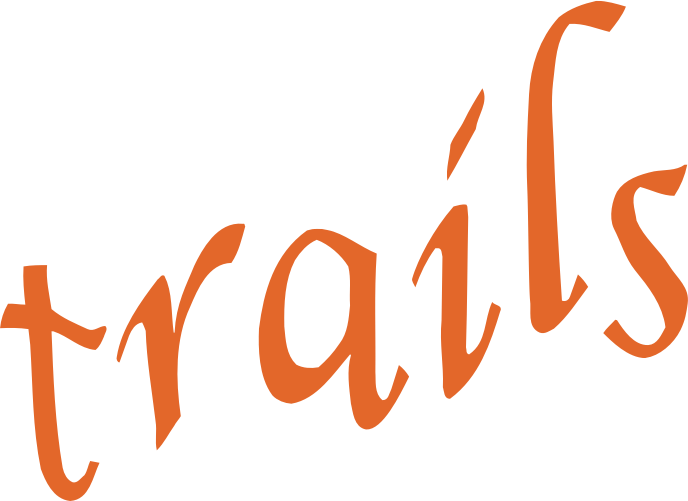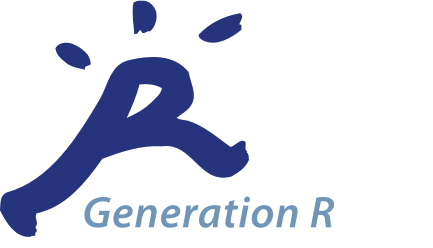-
measure Amsterdam Neuropsychological Tasks (ANT)
Study: NTR Mode of collection: MeasurementsAndTests Behavioral/cognitive task Available measurements: Young Netherlands Twin Register YE_ATTEF1 YE_ATTEF2The Amsterdam Neuropsychological Tasks (ANT) are computerized executive functioning tasks. The ANTs measure a diverse range of executive functions, including attention, working memory, and inhibition.Created March 28, 2023 • Updated April 4, 2023 -
measure Amsterdam Neuropsychological Tasks (ANT)
Study: TRAILS Mode of collection: MeasurementsAndTests Behavioral/cognitive task Available measurements: Population cohort T1 T4
Clinical cohort T1 T4The Amsterdam Neuropsychological Tasks (ANT) are computerized executive functioning tasks. The ANTs measure a diverse range of executive functions, including attention, working memory, and inhibition.Created March 28, 2023 • Updated March 28, 2023 -
measure Brief Barrat Impulsivity Scale (Brief-BIS) and risk behavior (substance (ab)use)
Study: YOUth Mode of collection: SelfAdministeredQuestionnaire Available measurements: Child and Adolescent 9 years 12 yearsThe Barratt Impulsivity Scale (Brief-BIS), a self-report measure, is one of the most commonly used scales for the assessment of the personality construct of impulsiveness. It measures 3 theoretical subtraits, namely, attentional, motor, and non-planning impulsiveness.Created March 28, 2023 • Updated March 30, 2023 -
measure Child Development Inventory (CDI)
Study: Generation R Mode of collection: SelfAdministeredQuestionnaire Available measurements: Main Cohort 6 months 1 year 1.5 years 2 years 3 years 4 yearsThe Brief Rating Inventory of Executive Function-Preschool Version (BRIEF-P) was administered to measure functions related to inhibition, shifting, emotional control, working memory and planning in preschool children in everyday life. Brief Rating Inventory of Executive Function (BRIEF) was administered, measuring inhibition, shifting, emotional...Created May 3, 2023 • Updated May 3, 2023 -
measure Child Gap Antisaccade
Study: YOUth Mode of collection: MeasurementsAndTests Eyetracking Available measurements: Baby and Child 6 years
Child and Adolescent 9 years 12 yearsThe Gap-overlap task is a gaze contingent paradigm that measures visual attention shifting between a central and a peripheral stimulus. This is thought to be a key sub process underlying behavioral control. The Gap-overlap task contains three conditions; i) Gap, in which the central stimulus disappears 200ms before the appearance of the peripheral target;...Created March 28, 2023 • Updated March 30, 2023 -
measure Childhood Executive Functioning Inventory (CHEXI)
Study: TRAILS Mode of collection: SelfAdministeredQuestionnaire Available measurements: The Next Generation T4 T5Validated assessment of executive functioning. Includes inhibition, regulation, working memory, and planning.Created March 28, 2023 • Updated March 28, 2023 -
measure Columbia Card Task (CCT)
Study: Generation R Mode of collection: MeasurementsAndTests Behavioral/cognitive task Available measurements: Main Cohort 9-10 yearsThe Columbia Card Task (CCT) is a psychological test that measures cognitive functions related to executive functioning, such as planning, set shifting, decision-making, and inhibitory control. During the CCT, participants are presented with a deck of cards and are required to sort the cards based on different categories, with the rules for sorting...Created May 3, 2023 • Updated May 3, 2023 -
measure Delay Discounting - hypothetical
Study: YOUth Mode of collection: MeasurementsAndTests Behavioral/cognitive task Available measurements: Child and Adolescent 9 years 12 yearsThe Delay Discounting task is the most widely used paradigm to measure the capacity to wait for a hypothetical monetary reward in children between 8-18 years old. A child is given a series of option between a variable immediate monetary reward and 10 Euros after a certain delay. The delay of the 10 Euro reward varies between 2, 30, 180, or 365 days. Each...Created March 28, 2023 • Updated March 30, 2023 -
measure Delay of gratification task
Study: Generation R Mode of collection: Observation Available measurements: Main Cohort 3 yearsThe Delay of Gratification task aims to measure self-regulation by presenting the child with the choice between a small reward in the short-term and a larger reward in the long-term. The classic implementation of the Delay of Gratification task is the Marshmallow experiment, in which a child is presented with one marshmallow right now and is instructed...Created May 3, 2023 • Updated May 3, 2023 -
measure Delay of gratification task
Study: L-CID Mode of collection: Observation Available measurements: Early Childhood Cohort T2 T3The Delay of Gratification task aims to measure self-regulation by presenting the child with the choice between a small reward in the short-term and a larger reward in the long-term. The classic implementation of the Delay of Gratification task is the Marshmallow experiment, in which a child is presented with one marshmallow right now and is instructed...Created March 28, 2023 • Updated March 28, 2023 -
measure Delay of gratification task
Study: RADAR Mode of collection: Observation Available measurements: Third Generation T2The Delay of Gratification task aims to measure self-regulation by presenting the child with the choice between a small reward in the short-term and a larger reward in the long-term. The classic implementation of the Delay of Gratification task is the Marshmallow experiment, in which a child is presented with one marshmallow right now and is instructed...Created March 28, 2023 • Updated April 4, 2023 -
measure Delay of gratification task
Study: YOUth Mode of collection: Observation Available measurements: Baby and Child 3 yearsThe Delay of Gratification task aims to measure self-regulation by presenting the child with the choice between a small reward in the short-term and a larger reward in the long-term. The classic implementation of the Delay of Gratification task is the Marshmallow experiment, in which a child is presented with one marshmallow right now and is instructed...Created March 28, 2023 • Updated March 30, 2023 -
measure Delay of gratification task
Study: Generation R Mode of collection: Observation Available measurements: Main Cohort 3 yearsThe Delay of Gratification task aims to measure self-regulation by presenting the child with the choice between a small reward in the short-term and a larger reward in the long-term. The classic implementation of the Delay of Gratification task is the Marshmallow experiment, in which a child is presented with one marshmallow right now and is instructed...Created May 3, 2023 • Updated May 3, 2023 -
measure Delay of gratification task
Study: NTR Mode of collection: Observation Available measurements: Young Netherlands Twin Register YC_BS1The Delay of Gratification task aims to measure self-regulation by presenting the child with the choice between a small reward in the short-term and a larger reward in the long-term. The classic implementation of the Delay of Gratification task is the Marshmallow experiment, in which a child is presented with one marshmallow right now and is instructed...Created March 28, 2023 • Updated April 4, 2023 -
measure Functional MRI Inhibition experiment behavior
Study: YOUth Mode of collection: MeasurementsAndTests Behavioral/cognitive task Available measurements: Child and Adolescent 9 years 12 yearsBehavioral output file accompanying the functional MRI acquired while subjects performed a task. The task aims to measure performance and brain activation during actual stopping as well as during the anticipation of stopping. Trials begin with the presentation of a cue (0, * or **), representing the stop-signal probability (0, 22 and 33% respectively)....Created March 28, 2023 • Updated March 30, 2023 -
measure Functional MRI Inhibition experiment scan
Study: YOUth Mode of collection: MeasurementsAndTests MRI Available measurements: Child and Adolescent 9 years 12 yearsFunctional MRI acquired while subjects performed a task. The task aims to measure performance and brain activation during actual stopping as well as during the anticipation of stopping. Trials begin with the presentation of a cue (0, * or *), representing the stop-signal probability (0, 22 and 33% respectively). Permanently visible are three horizontal...Created March 28, 2023 • Updated March 30, 2023 -
measure Hand Game
Study: YOUth Mode of collection: Observation Available measurements: Baby and Child 3 yearsThe Hand game aims to measure non-verbal inhibitory control in children aged 3 to 5 years and is based on the adapted hand game by Hughes (1996). During this task, the child is asked to place a flattened hand on the table whenever the researcher presents a fist and to present a fist whenever the researcher places a flattened hand on the table. Each child...Created March 28, 2023 • Updated March 30, 2023 -
measure Infant Stop Signal Anticipation Test
Study: YOUth Mode of collection: MeasurementsAndTests Behavioral/cognitive task Available measurements: Baby and Child 6 yearsThe Stop Signal Anticipation task is adopted from Zandbelt and Vink (Vink et al., 2014, Zandbelt et al., 2008) and is also used as MRI task in YOUth child and adolescent (METC 14-617). The Stop Signal Anticipation task measures response inhibition, which is considered an important aspect of behavioral control. Children will be instructed to stop a moving...Created March 28, 2023 • Updated March 30, 2023 -
measure Inhibition experiment (mock scanner)
Study: YOUth Mode of collection: MeasurementsAndTests Behavioral/cognitive task Available measurements: Child and Adolescent 9 years 12 yearsBehavioral output file of the inhibition experiment practice run preceding the Functional MRI Inhibition experiment.Created March 28, 2023 • Updated March 30, 2023 -
measure Penn Computerized Neurocognitive Battery (Penn CNB)
Study: YOUth Mode of collection: MeasurementsAndTests Behavioral/cognitive task Available measurements: Child and Adolescent 9 years 12 yearsThe Penn Computerized Neurocognitive Battery (Penn CNB) is a Dutch translation of the web-based computerized neurocognitive battery developed by the Brain Behavior Laboratory of the University of Pennsylvania (https://penncnp.med.upenn.edu/). It includes a total of 17 tests, resulting in measures of performance accuracy (the percentage or number of...Created March 28, 2023 • Updated March 30, 2023






